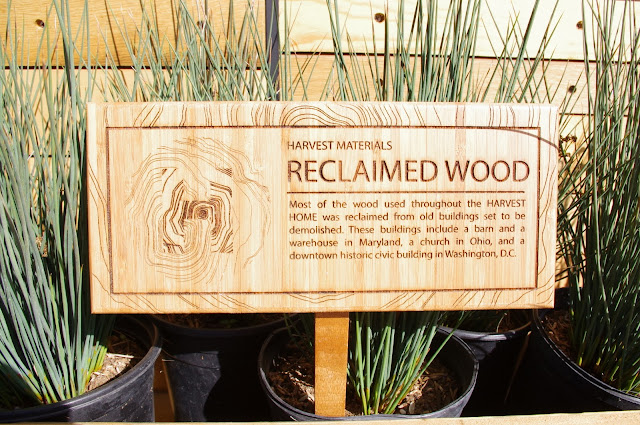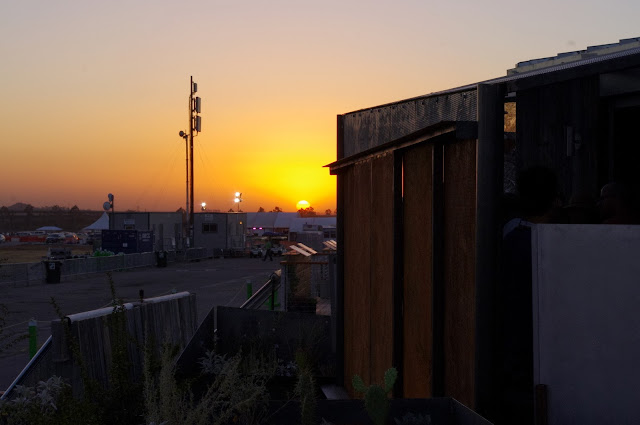The trip was a pretty momentous one for our minivan too, who hit 200,000 miles on the way down. We decided it was time to finally give her a name--the christening was a conglomeration of everyone's vote: Sophie Emily Juniper.
So Talia Lily, where are you headed?
Why, to the 2013 Solar Decathlon, held in Orange County Great Park, Irvine, California! She got several compliments on her "I'm a Wild Child" outfit, particularly from a set of grandparents who thought the shirt would be just be perfect for their own grandchild.
In case you didn't notice, Talia is now sporting a mighty holey grin. Apparently she got bored during recess and wiggled the other front tooth until it finally came out. No signs of either coming in soon!
Anyway, back to Solar Decathlon, the event was amazing--just like we expected. As this is the third Solar Decathlon event we've attended, we noticed some new trends. In general, the homes were more mainstream in their architectural appearance than the homes we saw in 2011, appealing to a wider audience than the concrete and "outsulation" homes that we saw last time. Here are a few exterior shots:
 |
| Stanford University |
 |
| Stevens Institute of Technology |
 |
| The Czech Republic |
 |
| And of course, my personal favorite, Team Austria. (After a year-long exchange in Salzburg, I'm naturally biased.) |
Gardens were also quite emphasized, whether edible or simply decorative. I wondered why so many teams selected plants native to southern California until I remembered that California's regulations are extremely restrictive when it comes to importing plants. Many of the teams had systems for harvesting rainwater to use in watering these gardens. One of my favorite gardens was simply a collection of plantings in milk crates, arranged to be a very simple, affordable, and transportable square-foot garden.
Vertical and rooftop gardens were likewise very popular. This garden came from Stevens Institute of Technology.
Brooklyn checks out a "vertical" garden from Missouri's "Chameleon House."
This planting seemed simple and practical enough to replicate.
The Missouri University of Science and Technology is unique because they are the only team to have competed in all five US Solar Decathlon events. They have a "solar village" on campus where professors and alumni reside. In walking through the Chameleon house, you could tell that design decisions were influenced by more than just the competition. The team constantly asked themselves--is this the kind of home I might someday choose to live in?
 |
| An enthusiastic tour guide from Missouri's "Chameleon House." |
Vermont's house was also unique in that instead of using a traditional solar array, it used "sticker" panels that adhere to a flat roof and work in low levels of sunlight. In the past, most of the solar systems have been pretty much identical (with the exception of Germany, who covered the entire surface of their home in solar panels back in 2007). As a potential consumer, it's more interesting to see how different products perform in competition.
Stevens' solar array was also different in that it used solar shingles now widely available on the market. Those in favor of shingles argue that you don't have to pay for both a roof and the solar array. Another one of Stevens' market-ready innovations? Bio-phase-change-material as insulation. This insulation uses the latent energy produced by material changing from a liquid to a solid around room temperature to release or absorb heat as needed, resulting in a 25-30% savings in energy costs.
Team Capitol DC capitalized on this same idea by using Flexinol wire to automatically open or shut the green louvers at different temperatures. The wire expands or contracts depending on the temperature, causing the louvers to either let in more or less direct light as needed to keep the home comfortable. Simple, yet ingenious.
Another great thing about DC's Harvest Home? It was designed to be a peaceful refuge where US military veterans suffering from Post-Traumatic Stress Disorder can heal and adjust to civilian life. Very cool.This artistic panel from Stanford intrigued me. The wooden slats actually expand or contract to show how efficiently your home is using energy, with the top portion correlating to energy production and the bottom correlating to energy expenditures. As a humanities major, I was excited by this intersection of art and engineering.
 |
| The girl in this picture actually designed the piece. Well done! |
California dreaming.
A gorgeous sunset was the fitting conclusion to an afternoon of harvesting the power of the sun.
Final Thoughts:
In the six years since Jason project managed the University of Illinois's 2007 elementhouse, solar power has gone from a rather revolutionary, far-fetched idea to a much more practical, attainable reality. As a consumer, it's nice to know that there are things that we can do right now to "go green" besides covering your home in solar panels. However, it's even nicer to realize that not too far in the future, those solar panels may become efficient and affordable enough to reach the mainstream consumer. In general, I think this trend is reflected in the architecture. As solar power is no longer on the fringe, neither is the design.
I noticed that the competition made a very concerted effort to involve children and make their exhibits kid-friendly. In addition, the communication materials educating the public seemed more engaging and informative than before. (My kids loved the origami crowns--I personally was amused by the custom-designed poker chip featuring Las Vegas's DesertSol home.) I believe this focus on involving the public, particularly the younger generation, is well-placed. After all, solar power is more than just a buzz phrase. We're ultimately shaping the world we pass on to our children...

...and to our children's children.
And so, if I may be brazen enough to put a few words in my daughter's mouth, if you happen to know anyone who lives close to Irvine, California, encourage them to visit the Solar Decathlon before October 13th. While the venue is great, it doesn't attract visitors passing by in the same way that it did when located on the National Mall in DC.

Annika says, "Solar Decathlon is totally worth it!"

















No comments:
Post a Comment